“Cooking is like love. It should be entered into with abandon or not at all.” Harriet Van Horne, American newspaper columnist
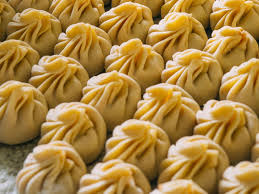
Nepal Cooking Class
What a blessed experience when a childhood dream becomes reality. The dream is that of Nirvana, the perfect place where peace and happiness coexist. And where’s this place and dream? It’s a trip to the top of the world: Nepal and The Kingdom of Bhutan.
Both countries are tucked far away in the tallest mountain range in the world, the Himalayas, and are surrounded by China and India. Nepal is the birthplace of Buddha, and Buddhism. The Kingdom of Bhutan is where they use the Gross National Happiness or GHH Index, a formal tool for measuring happiness.
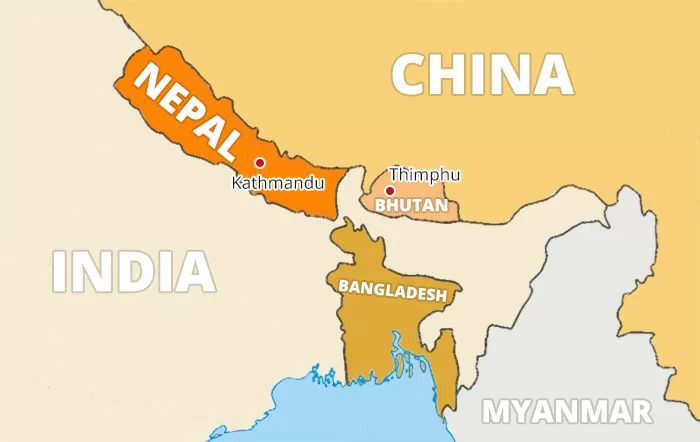
Getting there is no piece of cake: a circuitous travel route: Guadalajara > Los Angeles (overnight) > Tokyo > Singapore (overnight) > Kathmandu; almost 24 hours of flight time, and combined with the overnight stays, it’s two days of travel. By the final arrival time, hopefully one has left all troubles behind to begin the adventure of a lifetime.


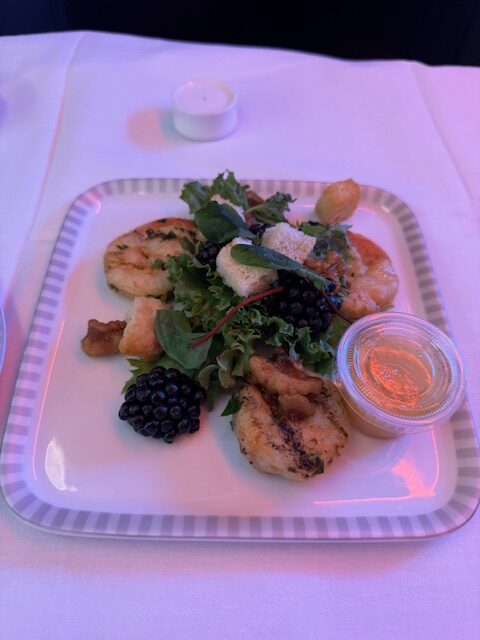

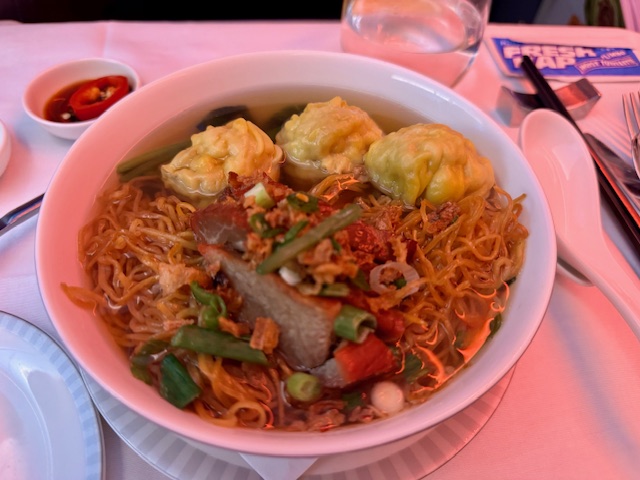

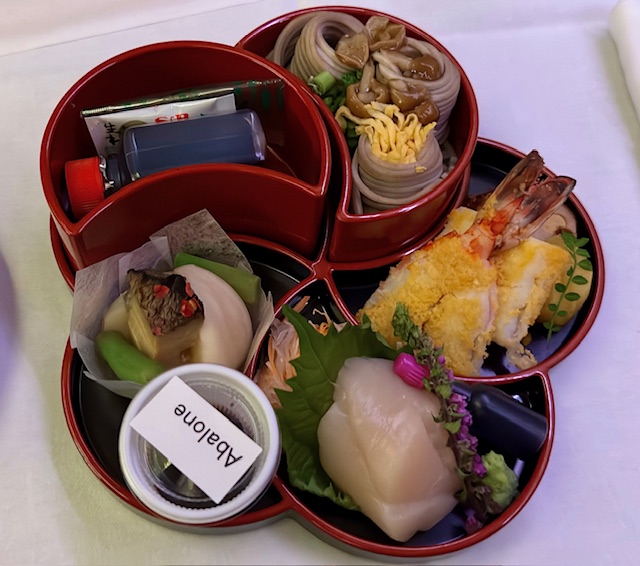
That’s how I arrived feeling in Nepal; a couple of days early before the official start of my Gate 1 Travel. This way, it allows me to get acclimated. However, this wasn’t necessary, for Kathmandu sits at 4,600 feet above sea level; whereas I live at 5,020’ at Lake Chapala. My first thoughts of this capital city – it’s a miniaturized version of India!
A midafternoon arrival at the hotel was perfectly timed with that most civilized of all traditions ~ the afternoon tea. You know that’s right up my cuppa tea, and not wanting to buck traditions, I planted myself in the lobby. There, overlooking the gardens, got to enjoy a combination of British and Nepalese savories and sweets. No matter where in the world, an afternoon tea brings serenity and soothing results to the weary traveler.

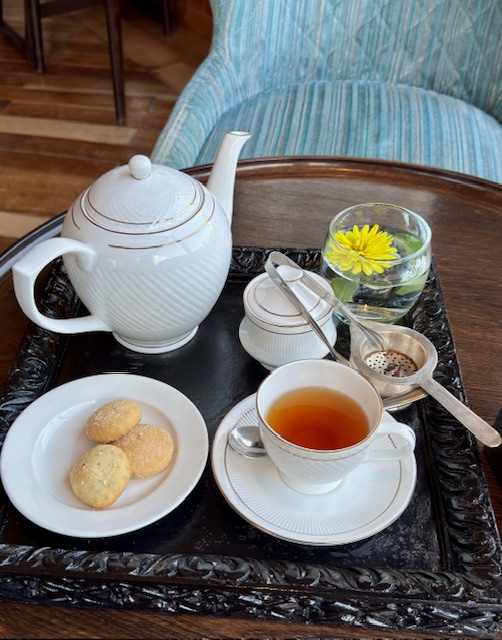
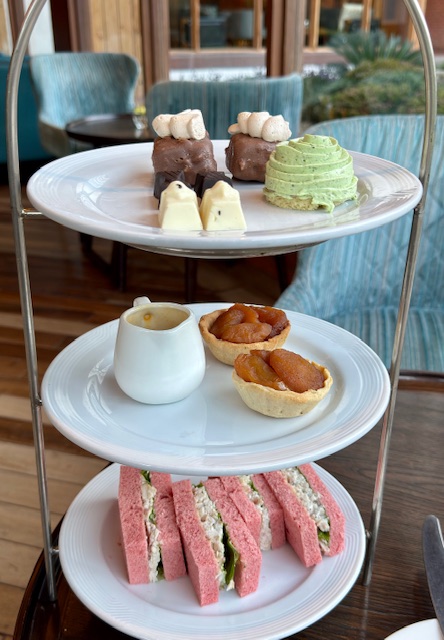
Tomorrow is a free day in the city before meeting up with my eight fellow travelers. What better way to begin this adventure than to indulge in one of my passions – cooking!
I signed up for a Nepalese cooking class on the online Viator site. The class had received all 5-star reviews, leaving me suspicious and hesitant at first. However, it was wrongful thinking, since I came to find out that every one of those stars were well earned.
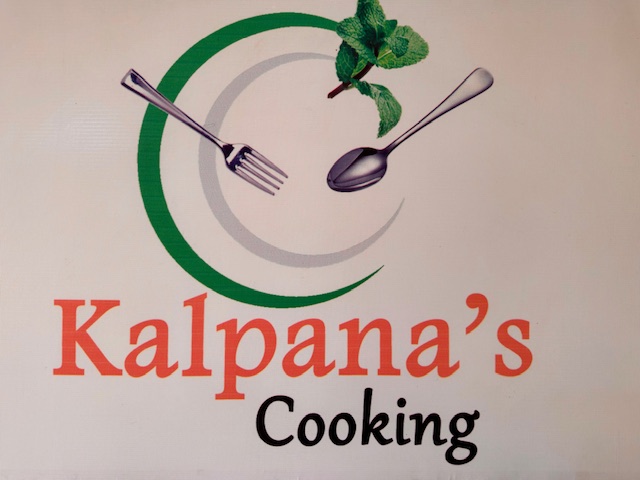
The day began with a 30-minute, hair-raising drive through early morning traffic: buses, cars, bicycles and motorcycles, and a horde of humanity all competing for the same cramped roadways. Interesting fact – it’s the law that all motorcycle drivers must wear a helmet, but not their passengers.
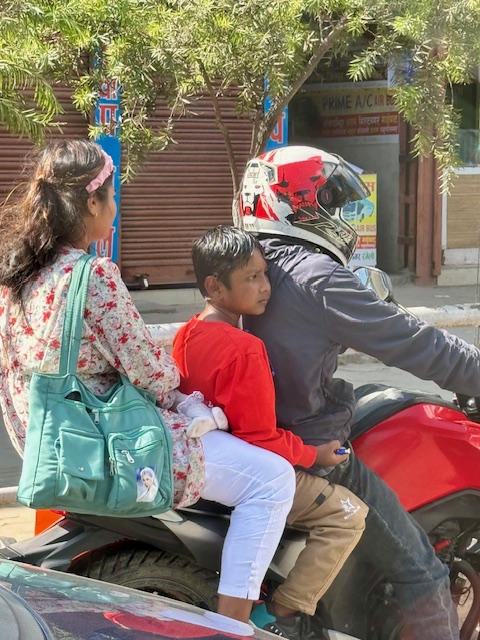
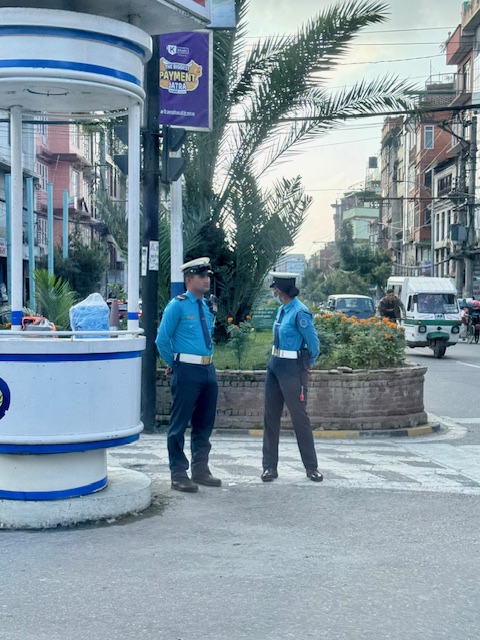
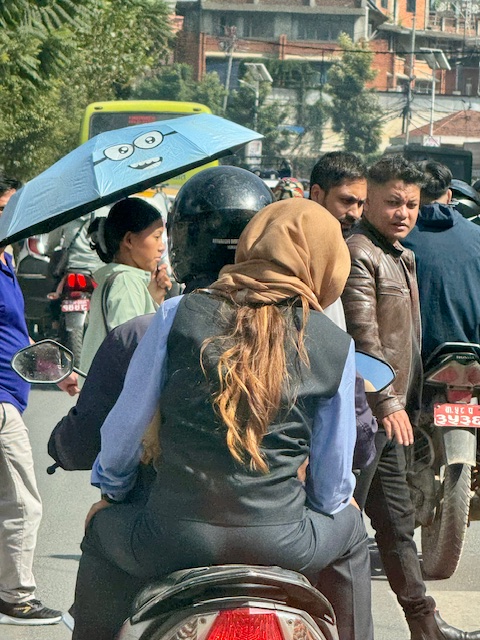

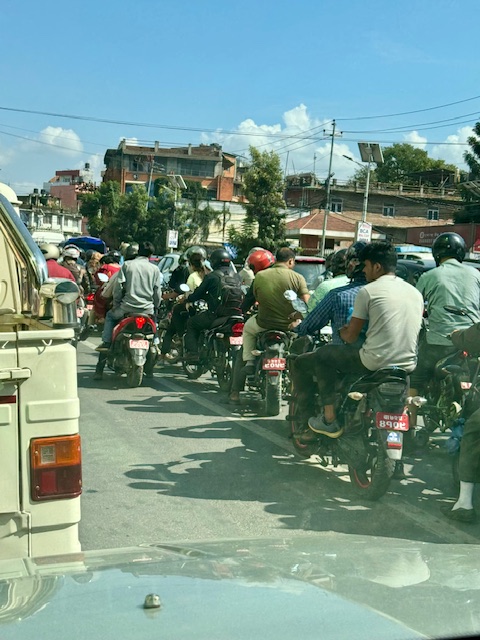

This class was going to be a great opportunity to sink my teeth into and experience the foods and spices of Nepal, and what an explosion of flavors and aromas! The 6-hour session was at the home of Mrs. Kalpana, and her ever-smiling daughter, Sachiko. The cooking gods blessed me today with their divine providence, for I was their only student, as the tourist season is just beginning. What luck!
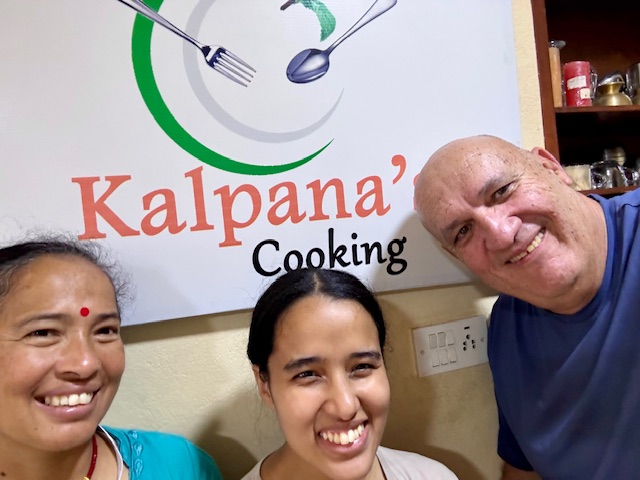
Their home sits on the outskirts of Kathmandu, perched high up on the side of a hill. Their humble and rustic kitchen awaited me to chop, slice, knead, sauté, fry, steam, and crushing roasted spices in the mortar – all in a morning’s work. But, first things first – a rich cup of creamy, milk masala tea was offered before any cooking began.


Mrs. Kalpana brought out a platter of spices: cardamon, turmeric, coriander, garlic, ginger, fenugreek seeds, mint, cumin, dry chilis, fennel seeds and masala; a wonderful spice concoction created by her mother who lives in the countryside. Regretfully, she didn’t have spice satchels for sale.


Today’s menu: dal, chicken with mushrooms, mustard leaves (Nepalese spinach), sponge gourd (luffa – it’s the sponge that once it’s dried, you use in the shower) with potatoes, tomatoes, cilantro, shallots, ginger, and rice.
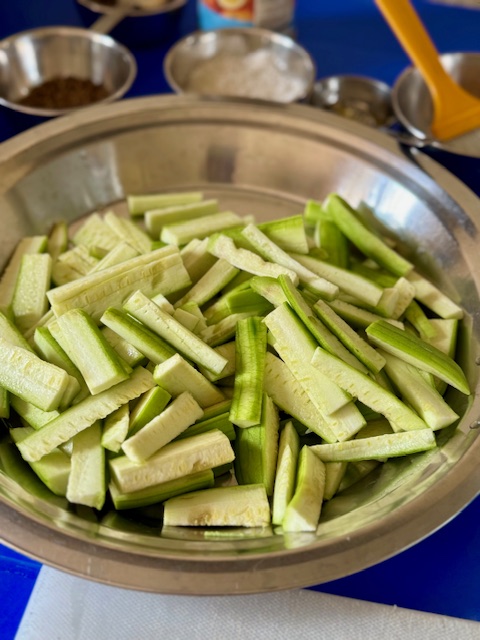
I peppered Mrs. Kalpana with questions about her cooking spices, and what she learned from her mother and her own adaptations. There was lots of laughter and her joy and love of cooking resonated all throughout the kitchen as we prepared a feast.
We cooked all morning, and by lunchtime, I was hungry; having smelled the heavenly aromas, and tasted all the exotic ingredients, plus that magic platter of spices. The anticipation was high for an incredible and tantalizing meal.

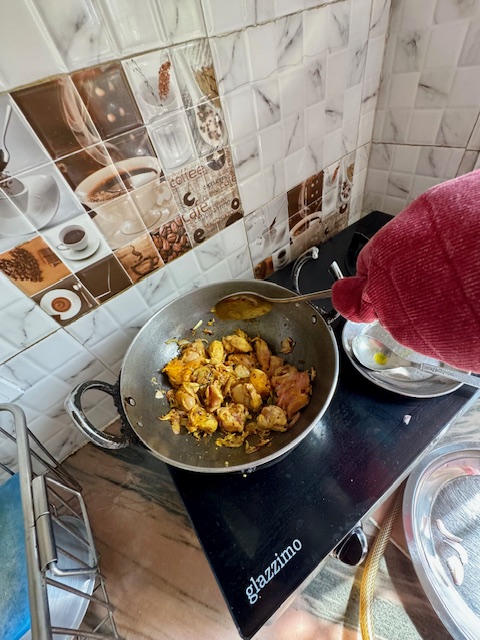
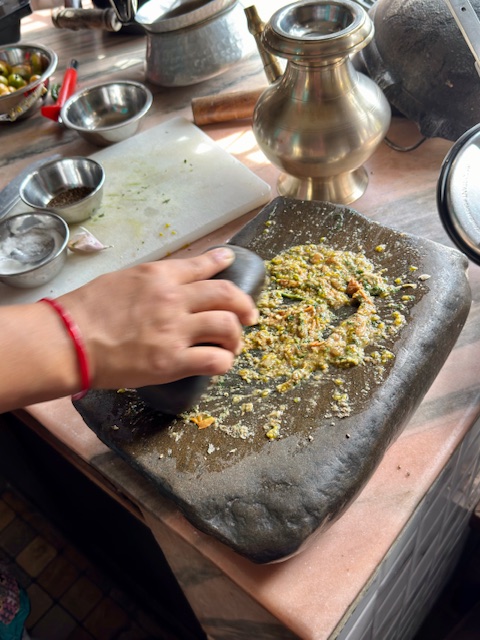
I sat down with Mrs. Kalpana, her daughter and we were joined by her husband, who was kept busy handling the affairs of their small ecolodge next door.
When my Thali (plate) was served, I asked what utensils to use – a fork or spoon? Their response – your right hand. Well, after showing me the proper way, I learned to scoop properly with my hands, and was all-in for the home-cooked experience.
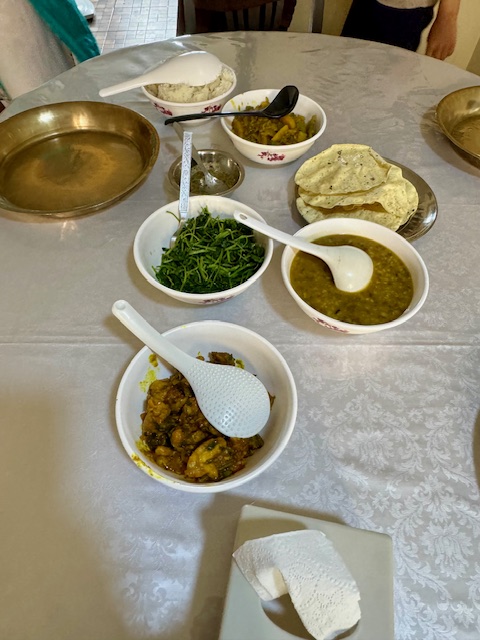

As kids, we’d use our hands to put stuff into our mouths, and I could hear my mother scolding me, “Sergito, do not use your hands, use utensils!” Truly, it was a bit messy but, in the end, it was all finger-licking good.

Lunch over, and feeling satiated, I walked around the property and found the best resting place to sit – under a pomelo tree in their yard. It felt like naptime, but it was time to make Momo’s, one of the iconic dishes of Nepal.
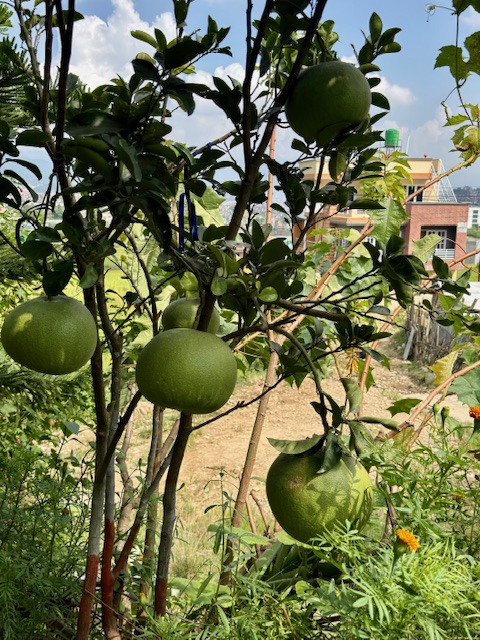
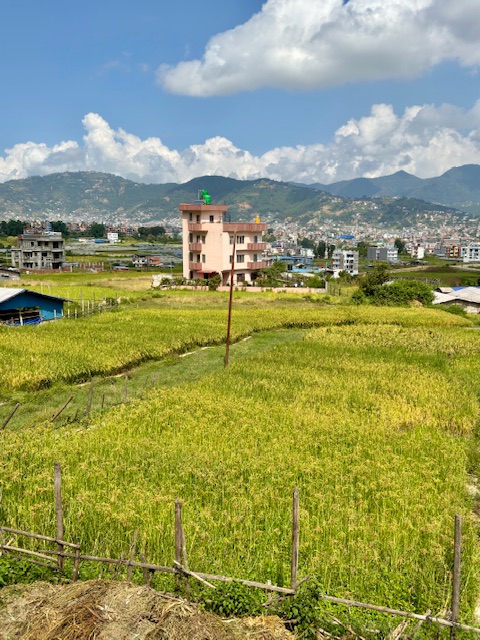
Momo’s are a type of steamed, filled dumpling native to Tibet, Nepal, and parts of northern India. They’re popular street food and snacks, often enjoyed with a variety of fillings and dipping sauces.
Our filling consisted of a savory mix of: minced chicken, garlic, cabbage, garlic, onions, ginger, cilantro, paneer and white cheese, and store-bought Momo spice. We’d make three versions: chicken, vegetarian and cheese. Basically, Momo’s are a blank canvas where you can create any filling that you desire.
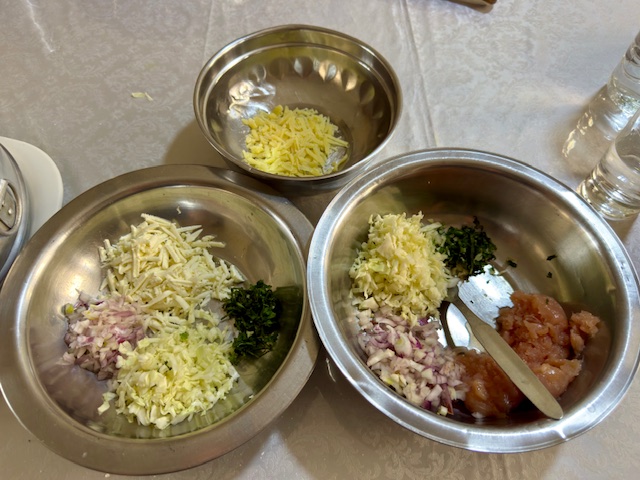
I mixed and kneaded the flour into a “bouncy texture.” It rested, and then we rolled and cut the dough into round shapes. A small amount of filling would go into the center of the circle. Here’s where disaster struck – mine were unrecognizable, no matter which type fold Mrs. Kalpana showed me. I was all fat, clumsy fingers.
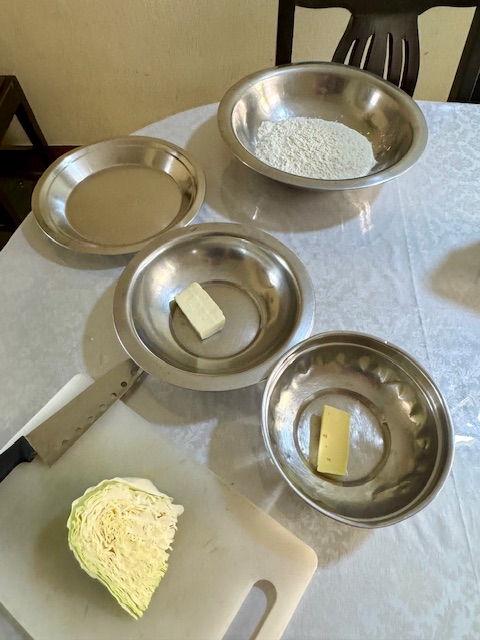
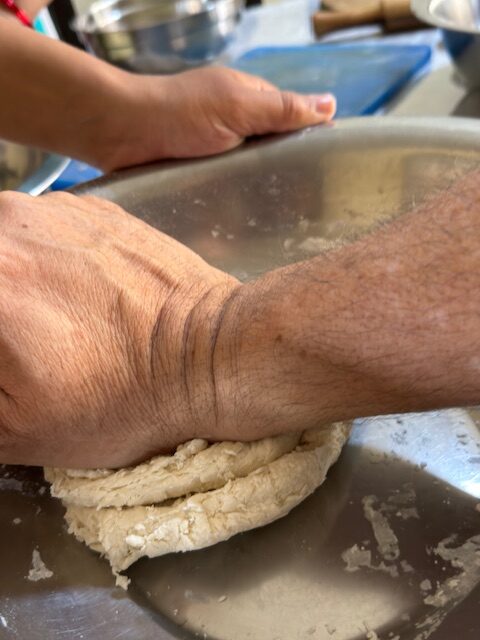
Making Momo’s takes time and patience, and eventually, like the inevitable punchline said of getting to play Carnegie Hall, it takes “Practice, practice, practice!”
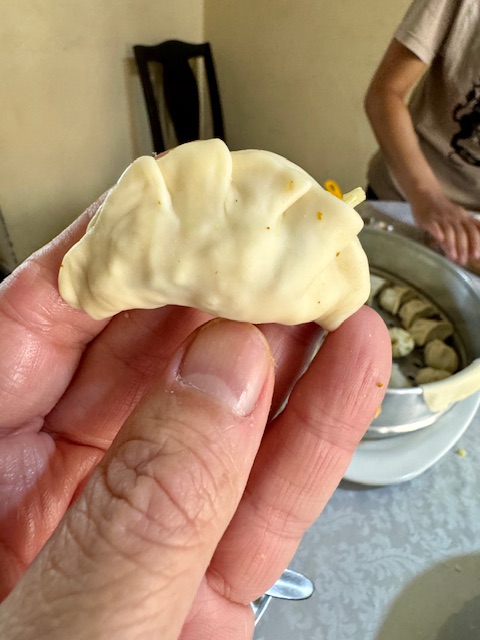
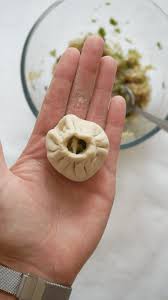
They laughed, I cried, but who cares – once steamed or fried, they were delicious, especially when dipped into our yummy, savory achar (sauce): ginger, garlic paste, onions, cilantro, peanut, turmeric, chili sesame seeds, cumin and salt and pepper to taste. It packed a punch, making the perfect accompaniment.

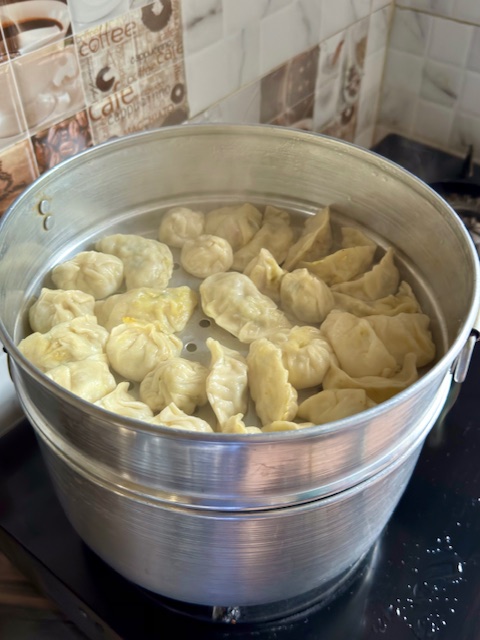
These dumplings have become popular in many parts of the world, due to their comforting texture, delicious fillings, and the influence of Tibetan and the Nepali diaspora communities.
Many cultures have their own take on Momo’s: gyoza (Japan), dumplings (China), pierogi (Eastern Europe), the Jewish Kreplach, ravioli (Italy), and their larger cousin, the empanada, originating all-over the Spanish-speaking world.
No matter the culture, who doesn’t enjoy the rich and savory taste encased in a light, pillowy cloud of yumminess?! Will I dare to make my own Momo’s? I’ve got the recipe, but only time and patience will tell.
And now, let the 18-day Himalayan top o’ the world adventure begin!
A wedding as seen from my hotel room…
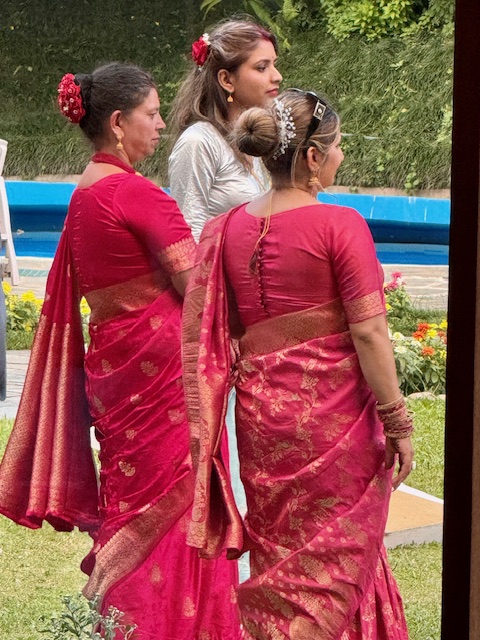

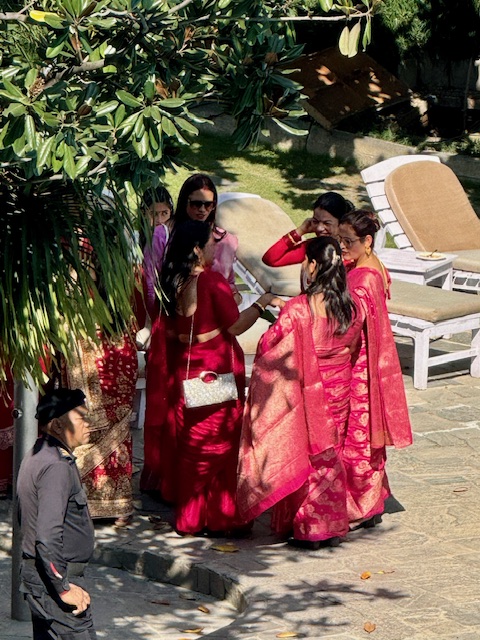

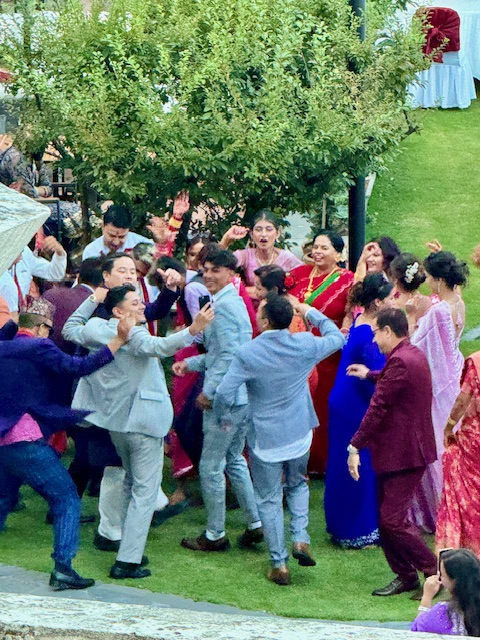
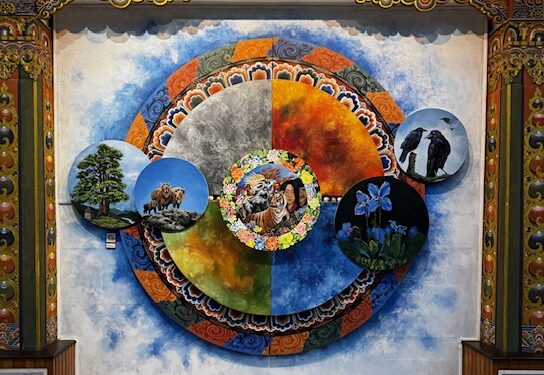
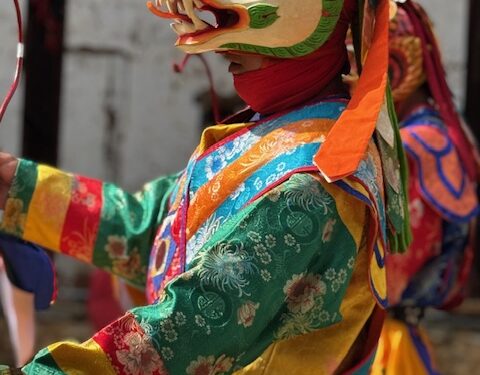
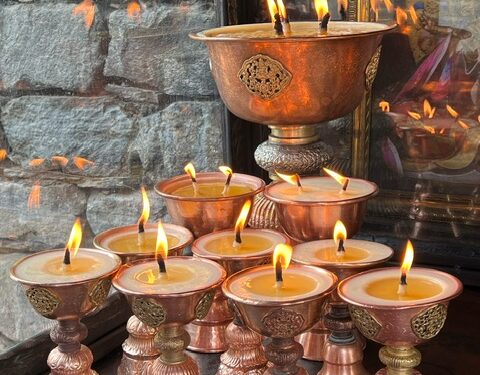



Kalpana’s! What a way to begin your once-in-a-lifetime adventure. Every foodie photo from ingredients to prepared dishes made me want to follow in your footsteps. Can’t wait for the next leg of the journey!
Sergio, so you finally got to Nepal! Good for you! Your cooking experience sounded wonderful; the momos looked and sounded so delicious! Your version will certainly be memorable. Take care!
I was in Katmandú in 1994. My memories are more rustic. You made me want to return and eat what I missed.
I’ll have a momo, please…or a half dozen. Are you going to display your acumen at Nepalese cuisine for your friends here at home?
I agree totally with Judy…neighbors & Nepalese begin with the same letter…there must be some reason for that! Mmmmmomo👍Nancy
Wow, what an adventure Sergio! I just ate dinner but am now hungry again!